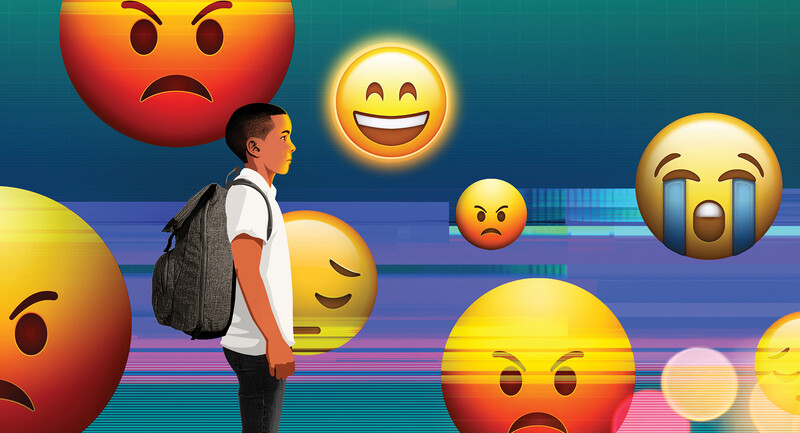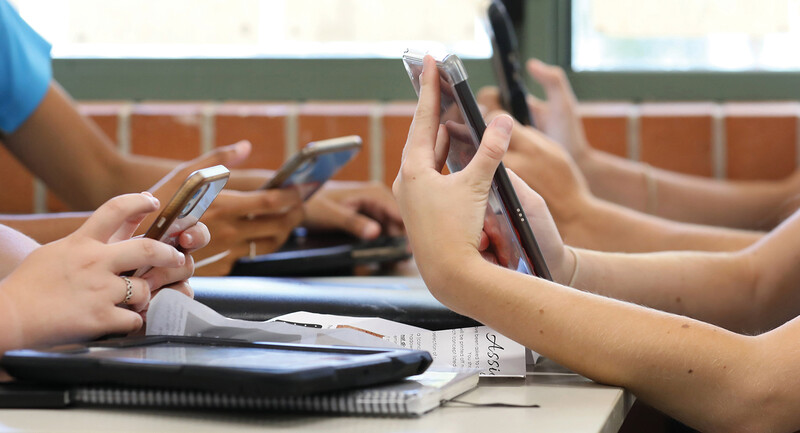Educators have had years to sort through and evaluate the impressive promises that have accompanied the digital revolution. Experience has made many of us savvier and, at times, more skeptical. Digital tools that promise to increase student engagement now have to survive a more robust examination before they are employed in the classroom. To be used heavily, such tools must demonstrate, in teachers' eyes, that they can engage students in ways that align with the specific skills and content being taught. Engagement for engagement's sake simply isn't enough.
Educators also realize it's essential to understand the trade-offs that surface every time we shift from analog to digital tools. In my 30 years of teaching (the past 11 in a 5th grade classroom) and in talking with colleagues around the country about how they use technology, I've certainly found this to be true.
But while many digital technology-based games and apps have proven to be disappointing, distracting, or time wasters, I've found that assistive technology is one class of ed tech that has delivered on the promise to revolutionize teaching and learning. In my own work as a teacher, digital tools that enable students with learning disabilities (or differences) to perform functions that might otherwise be difficult or even impossible have earned a revered status. Probably more than anything else in my 30 years as a teacher, assistive technology has changed my instruction. Given its ability to individualize learning and increase access to high-level curricula, I believe it should be the starting point of school ed-tech strategies.
Elevating Access and Learning
Assistive tools like audiobooks with a text-to-speech function or predictive spelling features help us effectively engage and empower a much more diverse group of learners. Given the right digital tools, students who once struggled to work independently in my class develop the capacity to access content and express ideas without my assistance. Like many educators, I regularly feel that I need more hours in the teaching day—and I'd love more teachers in my classroom. Assistive technology delivers something akin to both. It can be a general education teacher's best friend.
The reality is, every general education teacher educates students with diagnosed and undiagnosed learning disabilities (or differences). I estimate that, on average, a quarter of my students every school year have such challenges. Additionally, in 5th grade, as the work volume and academic expectations increase, students without documented history of a learning difference start to indicate that they would also benefit from assistive technology. I don't require students in my class to have a diagnosis to use supports that help elevate their output or understanding.
Liberating Struggling Readers
There are many examples of how assistive technology can be helpful to students. Empowering struggling readers to read with confidence is one of the most significant. By simply removing obstacles for poor decoders, digital tools and platforms liberate many to become passionate readers. Reading platforms that offer audio versions of books students are working with in class—or better yet, audio versions that also highlight on the screen the text as it's being spoken—welcome everyone into my classroom's reading culture.
Learning Ally (a subscription service) and Bookshare (a free service) are available for anyone with a known print disability. For students without a diagnosed learning disability who may still benefit from audiobooks, there is Audible's Immersion Reading (available for purchase on Audible). All these platforms offer synced voice and highlighted printed text.
Audiobooks (and text-to-speech apps) enable students with print disabilities like dyslexia to read at their intellectual level. Without audio assistance, decoding and fluency struggles can limit affected students to immature story and content matter, and quickly sour them on reading. When students can read content that actually engages them, they read more, often with urgency and enthusiasm.
Additionally, audiobooks let struggling readers engage their higher-order thinking and literacy skills. After they discover that reading involves more than sounding out words, many find they are skilled at making connections, drawing inferences, and making predictions. With decoding support in place, many dyslexic students become leaders in book discussions. They establish respected "reading identities" among their classmates. As you might imagine, this status delivers serious academic, social, and emotional benefits inside and outside of school.
With the development of these reading platforms that combine audio and highlighted text, many students also report that reading along with audiobooks has improved their fluency, word recognition, vocabulary, and oral reading expression. I have personally witnessed students who once found reading a trial become more confident, competent oral readers through working with audio-text programs. Considering the other competing demands in typical classrooms, most general educators would be challenged to deliver those super-charged learning gains without additional teaching assistance.
I recently hosted a learning panel for our school's 5th graders. On the panel were former students with unconventional learning profiles such as dyslexia and ADHD who were thriving in school. They spoke about tools and strategies that help them succeed in the upper grades. I was stunned when all the dyslexic student panelists shared that synced reading systems had notably improved their reading skills. One student even said that she no longer depends on audiobooks for all her reading. She confessed that prior to switching to Learning Ally in 5th grade, she had never finished an entire book. Once she switched to audiobooks, she turned into a bookworm overnight.
Closing the Gap in Writing
Writing instruction also benefits from assistive tech-based tools and supports. Dictation apps that allow students to have their speech converted into written text enable my struggling writers to increase their production of paragraphs, stories, and the like while freeing me to engage more students during writing time. Fortunately, dictation apps are now embedded in most devices (even phones and tablets) and platforms. Microsoft just launched a suite of apps to support individuals with dyslexia, and Apple devices and Google Chromebooks embed all their devices with dictation and predictive spelling apps.
Previously, my dysgraphic or dyslexic students who struggled to get their words or ideas down consumed a disproportionate amount of my instructional time. With the help of assistive technologies, I find that students who fit this profile can now, during writing time, find a quiet corner and speak into the mic on their device.
Once they get comfortable with dictating what they want to say into a dictation app and editing the text produced, students who previously turned in minimalistic, poorly composed written work now regularly surprise me with more volume, detail, and depth of thought. Dictation tools have helped to close the gap between my struggling students' oral and written expression, improving their overall academic performance on written projects and assessments.
Dictation tools aren't for everyone. The good news is, most students are self-selecting; they gravitate to tools that genuinely help them. Students may have to practice patience. It can take several tries before students acclimate to dictation tools, and the apps take a while to learn a student's speech and word usage (although most eventually do an excellent job of deciphering what the student is saying). I always encourage students who demonstrate a notable gap between their oral and written expression to try dictation. The difference it makes can be transformational.
As an alternative, simple predictive spelling apps offer significant support for those who struggle with the mechanical skills required to get their thoughts on paper, allowing many students to write more confidently and fluidly. Student output often increases once these students are allowed to focus on their ideas, instead of being distracted by spelling and handwriting snags.
Keeping Engagement Up, Rowdiness Down
Another compelling aspect of assistive technology is its positive impact on negative classroom behaviors. Every teacher has witnessed the connection between academic frustration and disengagement. When struggling students aren't engaged with their work, they typically find less constructive ways to engage themselves, often disrupting other students in the process. Assistive technology lets a teacher get away from having to police struggling students, opening up ways for those strugglers to be productive and letting the educator focus on instruction.
Myths that Lead to Avoidance
Given all these teaching advantages, it's surprising that many teachers don't make assistive tech alternatives available to those students who could benefit. Some teachers even actively prohibit the use of learning-related apps in their classroom. Myths and misconceptions surrounding assistive technology are largely to blame for such avoidance.
Some teachers believe that assistive technology creates inequities in the classroom by giving certain students academic advantages. In fact, the opposite is true. Assistive technologies help offset inequities by providing students who have learning differences with better access to learning opportunities. When we remove barriers to students accessing content and expressing their ideas, teachers can instruct and assess students with learning disabilities (or differences) more equitably.
Another myth about assistive technology is that it interferes with acquiring fundamental skills. Again, it's the other way around. Students use assistive platforms and apps as work-arounds so they can participate to the fullest extent in learning activities, including mastering key skills. These tools help prevent these kids from feeling excluded from the learning.
Introducing assistive technology into lessons in ways that authentically help students develop fundamental skills requires us to reflect on our teaching goals. For example, if a teacher wants students to practice their handwriting, obviously keyboarding is not a suitable tool. However, if a writing exercise is meant to practice identifying and supporting main ideas, keyboarding with predictive spelling or using a dictation app would be a beneficial way for a student with fine-motor deficits or language-based learning differences to express their ideas.
Some educators fear that assistive technology creates "e-dependence." But one of the most compelling attributes of assistive technology is the sense of independent confidence it provides for students with learning disabilities (or differences). Without assistive technology, these students are often our most dependent learners. Becoming proficient using various tech tools helps them build academic autonomy and develop a sense of agency. Down the road, they will require much less adult support to keep pace with academic expectations.
Many concerns about using assistive technologies are relieved by considering one of its chief benefits: flexibility. Teachers don't need to use these tech tools for every student or every activity. More important, teachers don't have to wait for a struggling student to receive a diagnosis or be screened before they can introduce that student to digital tools that can sustain his or her productivity, engagement, and progress. And because many tools are now embedded in most widely available platforms and devices, often no search for tools or purchase is required.
Give Apps a Chance
One would be hard-pressed to find a teacher who doesn't feel that the digital age has come with some hidden costs. The meteoric rise of time spent in front of a screen or on social media is disquieting to many of us who care about the healthy development of our students. However, educators frustrated by the distractions of screened devices or disappointed by inflated promises about educational technology should hold an exception in their thinking for tools that have the potential to make us better teachers and our students better learners. Assistive technology has the power to increase student independence, competence, and confidence, and to increase a teacher's reach and effectiveness. It should have a presence in the instructional strategies of every tech-savvy school.









